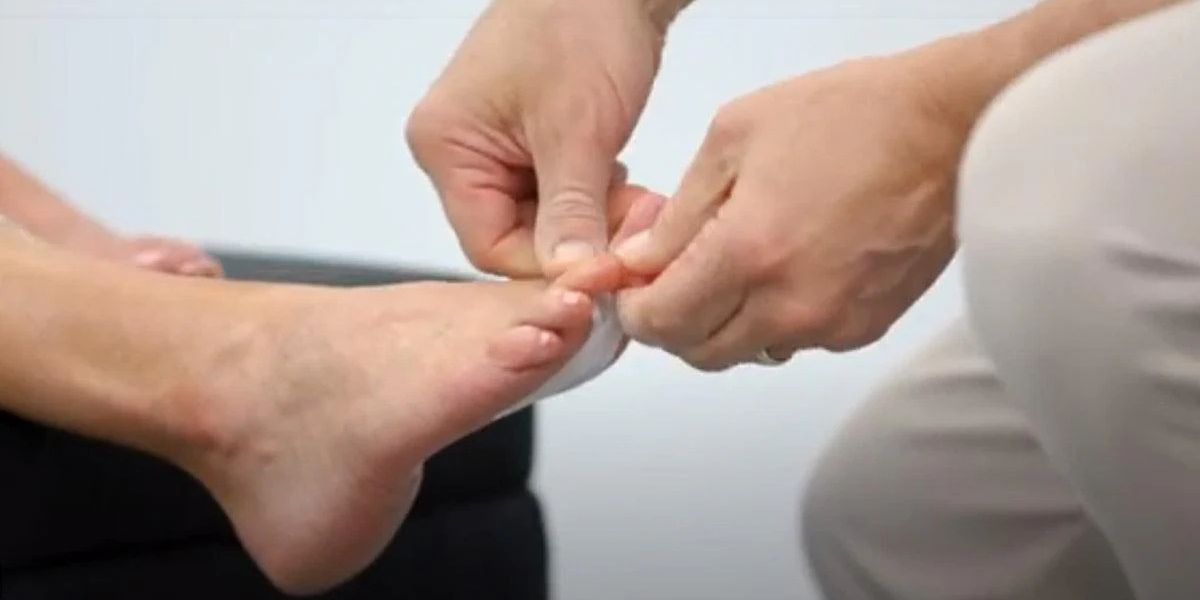How to fix hammertoe isn’t just about comfort—it’s about protecting your long-term foot health. A toe deformity like hammertoe happens when the toe joint bends abnormally, often due to tendon imbalance, poor footwear, or injury. Left untreated, it can lead to toe stiffness, pain, and walking problems. Fixing hammertoe starts with identifying its cause and acting early. From gentle stretches to supportive footwear, there are ways to restore balance and reduce discomfort without surgery. For severe cases, surgical correction may be necessary. In this guide, you’ll learn the most effective treatments and prevention tips so you can keep moving comfortably every day.
What is a Hammertoe?
A hammertoe happens when the toe joint bends abnormally, making the toe look curled or bent downward. This can affect any toe but often impacts the second, third, or fourth toe. Over time, the toe stiffness may worsen, making movement painful. Many confuse it with mallet toe, but there is a clear difference between hammertoe and mallet toe. Hammertoe bends at the middle joint, while mallet toe bends at the joint near the tip.
Inside your toe anatomy, small muscles and tendons work together to keep the toe straight. When there is tendon imbalance, the toe loses its natural position. This leads to toe misalignment, sometimes alongside curled toe or claw toe deformities. The problem can be flexible in the beginning, but if left untreated, it may become rigid.
Causes of Hammertoes
There are several reasons what causes hammertoes. Wearing tight, narrow shoes or high heels forces toes into a cramped position. Over time, this tight shoes injury or high heels foot problems changes the muscle balance in the toes. People who wear these kinds of shoes for years often develop bent toe deformities.
Medical conditions can also trigger hammertoes. Arthritis, diabetes, and nerve problems can weaken the muscles, leading to toe misalignment. In some cases, an old foot injury changes the toe anatomy. Over time, a small imbalance becomes a big problem, often needing toe surgery.
Common Symptoms of Hammertoes
Early signs of hammertoes include slight bending of the toe, mild pain, and trouble wearing shoes comfortably. The affected toe may rub against shoes, causing redness or swelling. At this stage, many people can still learn how to fix a hammertoe without surgery.
As the condition progresses, symptoms get worse. You may notice calluses and corns forming on top of the toe or under the foot. Foot pain increases, and the toe becomes stiff. Walking may feel awkward, and even standing can be uncomfortable.
How Fix Hammertoes are Diagnosed
A podiatrist can usually diagnose hammertoes with a simple foot exam. They check the toe joint flexibility, pain level, and skin condition. They may ask questions to see if you have hammertoes and diabetes risks or other health issues.

Sometimes, X-rays are needed to see the bones clearly. This helps the doctor decide if joint fusion surgery or other treatments are needed. If you are searching for hammertoe treatment near me, choose a specialist who has treated many cases in your area.
Risk Factors for Developing Hammertoes
Some people are more likely to develop hammertoes than others. Women are at higher risk due to wearing heels, which cause high heels foot problems. Aging also plays a role, as muscles lose strength over time, leading to tendon imbalance.
Genetics can be a factor too. If a family member had bent toe problems, you might develop them as well. Certain jobs that require standing for long hours also increase the chances of getting hammertoes.
Complications if Left Untreated
If ignored, hammertoes can lead to serious problems. Hammertoe complications if untreated include chronic foot pain, permanent stiffness, and limited mobility. The abnormal position can also cause skin breakdown, leading to ulcers.
People with hammertoes and diabetes risks face more danger. Poor circulation slows healing, and even small wounds can turn into infections. This is why when to see a podiatrist for hammertoe is as early as possible.
Nonsurgical Treatments for Hammertoes
Mild hammertoes can often be treated without surgery. Wearing best shoes for hammertoes with a wide toe box helps relieve pressure. Custom orthotics or other orthotic devices can improve foot alignment. Many patients also benefit from hammertoe exercises you can do at home.
Stretching routines like stretching exercises for curled toes improve flexibility. Pain can be reduced with padding, ice packs, and gentle massage. If you want to know how to fix a hammertoe without surgery, this combination of footwear change, exercises, and orthotics is the best start.
Surgical Options for Severe Hammertoes
When conservative methods fail, toe surgery may be needed. Common procedures include tendon release, bone trimming, or joint fusion surgery. The choice depends on how severe the toe deformity is.
The surgical recovery time for hammertoes can range from a few weeks to months, depending on the procedure. Patients looking for affordable hammertoe surgery in USA should compare clinics but also choose a surgeon with strong experience.
Prevention Tips for Hammertoes
Preventing hammertoes is easier than fixing them. Wearing roomy shoes with good arch support is key. Avoid narrow, pointed shoes to prevent tight shoes injury. Doing regular foot exercises keeps muscles balanced.
Simple habits like checking your feet daily, especially if you have diabetes, are vital. Following hammertoe prevention tips can save you from pain and costly treatments.
Living with Hammertoes
If you already have hammertoes, daily care matters. Using orthotics for bent toes, padding, and wearing comfortable shoes can make walking easier. Knowing hammertoe pain relief tips also helps you stay active.
While can hammertoes be reversed is a tricky question, early treatment offers the best chance. The best podiatrist for hammertoes in [city/state] can guide you on whether surgery is needed and how to manage symptoms. In the USA, hammertoe treatment cost USA varies, but proper care is worth every dollar.
Table: Hammertoe Treatments Overview
| Treatment Type | Best For | Recovery Time | Cost Range (USA) |
| Shoe changes + Orthotics | Mild, flexible hammertoes | Immediate comfort | $50–$300 |
| Physical therapy + Exercises | Early stages | Weeks | $100–$500 |
| Tendon release surgery | Moderate deformity | 4–6 weeks | $1,500–$4,000 |
| Joint fusion surgery | Severe, rigid hammertoes | 6–12 weeks | $2,000–$6,000 |
FAQs
Can you reverse hammer toe?
Early-stage hammertoes can sometimes be improved with exercises, better footwear, and orthotics, but severe cases usually need surgery.
How can I straighten my hammer toes at home?
You can try stretching exercises, wearing roomy shoes, and using toe splints or orthotic devices to improve alignment.
Is it worth fixing a hammer toe?
Yes, fixing it can relieve pain, prevent toe stiffness, and improve mobility, especially if treated early.
Is it possible to correct hammer toes without surgery?
Yes, mild hammertoes can often be managed with foot exercises, shoe changes, and custom orthotics before surgery is needed.
Welcome to Heel Tooth! I’m Lee Marvin.

